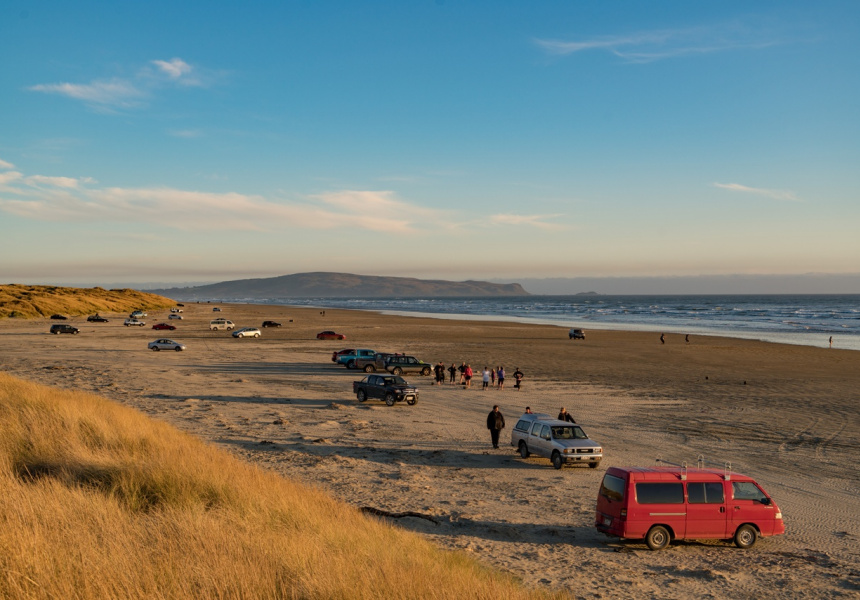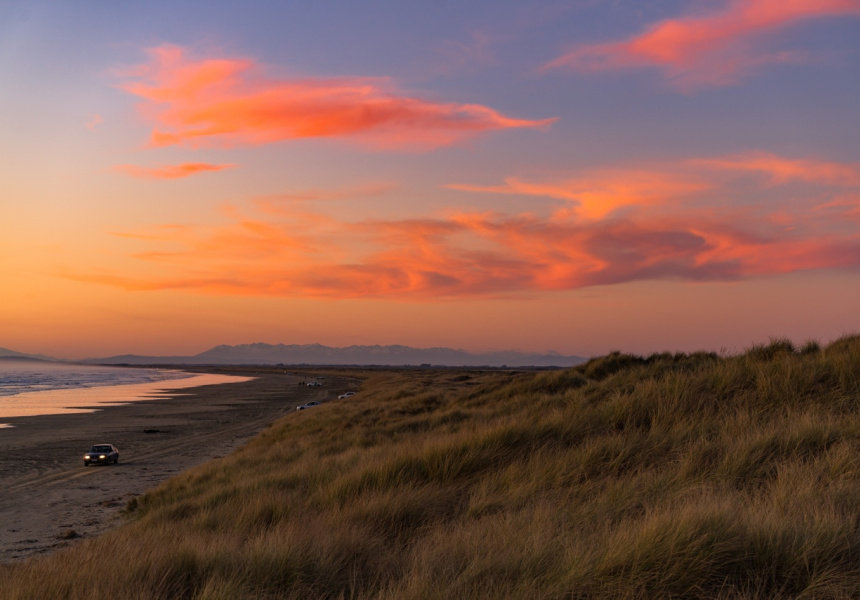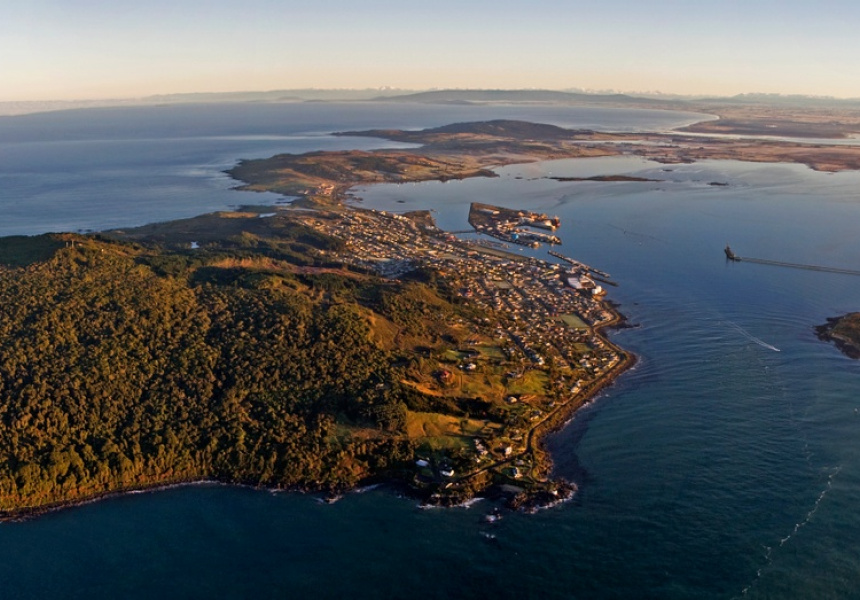The southernmost end of New Zealand’s South Island can be a bit overlooked – Queenstown to the north tends to draw the visitors. But the green, windswept, grassy cliffs along the blue waters of the moody Foveaux Strait around Invercargill and Bluff are the equal of anywhere.
There’s stunning scenery all along the coastline of a region that’s closer to the South Pole than the equator. And that scenery extends inland, where rolling fields full of cows and sheep give way to native, fern-filled forests. The small towns, among New Zealand’s oldest, and once heavily involved with whaling and gold mining, have an edge-of-the-world feel. The area’s also the spiritual home of cheese rolls, the perfect food to keep the energy levels up.
Stay
Never miss a moment. Make sure you're subscribed to our newsletter today.
SUBSCRIBE NOWThe Lands End Hotel’s name is apt for this charming boutique lodging that overlooks Stirling Point near Bluff. This is the very end of State Highway 1 and almost the southernmost spot on the South Island – the lodge looks out on the Foveaux Strait (beyond which is Stewart Island and eventually Antarctica). Part of the thrill here is just being in such a cosy place so far south, especially when rainy, windy storms lash the windows and sloped roof. The five king rooms each have ensuites, and the elegant decor (you’ll see a few chandeliers) gives off grand English country house vibes.
A few minutes up the road in the centre of Bluff, the art deco-inspired Foveaux Hotel is a charming bed and breakfast close to the ferry terminal (for adventures further south on sparsely-populated, wild Stewart Island) and local shops and restaurants (including an excellent fish’n’chip shop next door called Galley Takeaways). Owners Pam and Mike, who go by their first names, are assisted by Oliver the cat – and a ghost named Mary. Possibly a former caretaker, she’s a friendly ghost, with reported encounters involving things like helping clean up spills. She seems to prefer to make her presence known most around a room which overlooks the harbour and has antique-looking furniture and a very soft bed. The building dates to 1937, but has free wi-fi and a continental breakfast.
The Langlands Hotel is a chic and modern 4.5-star hotel in the heart of Invercargill. The seven-storey hotel has soft lighting, large beds and sleek bathrooms in each of its 78 rooms, which also feature New Zealand-made toiletries from Still Botanicals, bedside USB ports, free wi-fi and local art. There’s also a fusion restaurant (Meld, with dishes like pork belly bao buns, duck siu mai with plum dressing, and Malay-style chicken and agria potato curry, plus a huge drinks menu that offers the Alexander Rabbit cocktail, featuring Rose Rabbit butterscotch liqueur, chocolate and cream) and several places to drink, including a top-floor bar with floor-to-ceiling-windows providing panoramic views of the city and countryside beyond.
See and do
Invercargill is Southland’s capital and one of the southernmost cities in the world. A good place to begin here is Queens Park near the centre of the city. The sprawling, 81-hectare park includes a special section showcasing sub-Antarctic plants. The indoor Winter Garden is a great place to warm up if you get cold, with many tropical plants to check out. Also don’t forget to stop by the aviary to see both native birds and those from around the world, and kids will enjoy the large play structures, too. A cafe in the park, The Cheeky Llama, has coffee, baked goods and sandwiches to help you refuel.
Also be sure to visit Petra. She’s an ostrich who has lived in the park since 2015 in her own enormous open enclosure she sometimes shares with sheep. Possibly one of the southernmost ostriches in the world, she’s known for being very friendly, and often walks over to the fence with long, loping strides to check out new visitors. Visiting Petra, and all of Queens Park, is free.
A fun, quick trip from Invercargill is a 12-minute drive west on Dunns Road to Oreti Beach. The wide, sandy beach is popular with locals. Flying kites is easy with the regular breeze, and you can go surfing and swimming – if you don’t mind the water being chilly. Picnics are popular too, as is simply walking along the beach and appreciating the views. You might see penguins, and even seals and sea lions. Huge leopard seals (sometimes more than three metres long and weighing up to 600 kilograms) sometimes come up here from their normal habitat around Antarctica. If you see one, stay at least 20 metres away for your own safety (and so they don’t get stressed out). Also make sure not to get between them and the water, since it’s where they like to go if they’re scared.
While you’re at Oreti Beach, watch out for motorists on the sand, who follow in the tire tracks of Southland hero, the speed bike racer Burt Munro. Munro used the beach, 26 kilometres in length, to test the speed of his Indian motorcycle in the 1960s. His story was immortalised in the 2005 film The World’s Fastest Indian, starring Antony Hopkins. You can learn more about Southland’s motoring history at Bill Richardson Transport World in central Invercargill.
When you’re already this far south in Aotearoa, driving to the southernmost point of State Highway 1, Stirling Point, is a must-do. The yellow sign showing how far you are from various places (for instance, 1403 kilometres from Cape Reinga at the top of the North Island, 2000 kilometres from Sydney, 5133 kilometres south of the equator, and a whopping 18,958 kilometres from London) is among the region’s most iconic sights. A real treat is walking past the sign along the Foveaux Walkway. The winding, well-maintained trail around fern-covered, forested cliffs gives way to high grass leading to Lookout Point. With few people around, and sweeping vistas south across the Foveaux Strait, there’s a sense of timelessness that’ll have you feeling like you’re at the edge of the world. The walk can take about an hour one-way – bringing snacks and water is a good idea. It can also sometimes be a bit windy by Lookout Point, and misty when fog rolls in from the sea (though that can enhance the mood).
You’ll also feel on the edge of things driving west past Orepuki to McCracken’s Rest. With the blue Foveaux Strait on one side and dramatic green hills and cliffs on the other, it’s about an hour’s drive from Invercargill. The area around it was once a thriving, bustling community when gold mining and whaling were popular, but today is mostly abandoned. Many of the buildings are no longer in use – but the Orepuki Beach Cafe certainly is. This cosy cafe’s known for its homestyle meals (seafood chowder, local Southland-fished blue cod, and classics like bacon and eggs and hotcakes) and delicious coffee. The building dates to 1885.
Learn about the deep south’s cultural history at the Te Hikoi Museum in Riverton. The museum features life-size exhibitions showing how the Māori people, who were the first to arrive in the region, adapted to its cold, challenging conditions, and also explore the impacts of European colonisation and the whaling industry.
Eat and drink
If the deep south has its own dish, it’s cheese rolls. A staple of school fundraisers, cafes, and freezers (they can be frozen then heated up when it’s time to eat them) for decades, “southern sushi” is much more than a crunchy exterior of rolled-up sliced bread and a gooey, cheese-based filling (but don’t forget the onion soup mix and evaporated milk in that filling) with butter slathered on top. Part of their appeal is their versatility: they’re perfect for breakfast, lunch and dinner, and as a snack at any time. Great places to try them include The Batch on the corner of Deveron and Spey streets in central Invercargill – their cheese rolls are traditional.
About a half hour’s drive west of Invercargill in Riverton – a cute small town filled with boatsheds lining the Aparima River at the heart of what’s affectionately known as the “southern riviera” – you’ll find The Crib. A pilgrimage here for the cheese rolls made by Cazna Gilder and her team is worth the trip alone – but the funky ’70s-inspired decor is the cherry on top – or in this case the butter on the cheese roll. Also in Invercargill, the Tuatara’s cheese rolls are extra large – and served in a beautiful refurbished space (that’s also a pretty backpackers if you’re looking for somewhere to stay) with exposed brick walls and wood floors next to a public square called Wachner Place, making it great for people watching.
Bluff’s famous for its oysters – they might be the tastiest oysters in the world. Normally expensive elsewhere, they’re more affordable here because they’re fished up from the Foveaux Strait. There’s even an annual Bluff Oyster & Food Festival celebrating the delicacy (though it’s cancelled this year, with plans to be back in 2024). For fine dining and fine views, Oyster Cove is next to the Land’s End lodge at Stirling Point. The enormous windows look out onto the Foveaux Strait. Other great dishes include piping-hot seafood chowder with Stewart Island salmon, blue cod, prawn and mussels, and tempura-battered blue cod (including as a burger with tartare sauce and fries). There’s also a kids’ menu (items include blue cod bites, chicken tenders and burgers) and desserts like panna cotta and cheesecake.
Locals love The Cabbage Tree, a family restaurant off Dunns Road on the way to Oreti Beach. It too does a great seafood chowder – but also dishes like a pork belly and bacon burger, Bavarian-style beef schnitzel, and seafood fettuccine in a cosy, country pub atmosphere.
Pies are also big in the deep south – and Fat Bastard Pies has a cult following. On Tay Street towards the southern end of Invercargill, there are classics like mince, steak and cheese, and creamy chicken, but also pies like veggie Thai curry (which is also vegan), cranberry chicken and brie, and Southland mutton. They make great takeaway food to fuel your adventures wherever you go.



